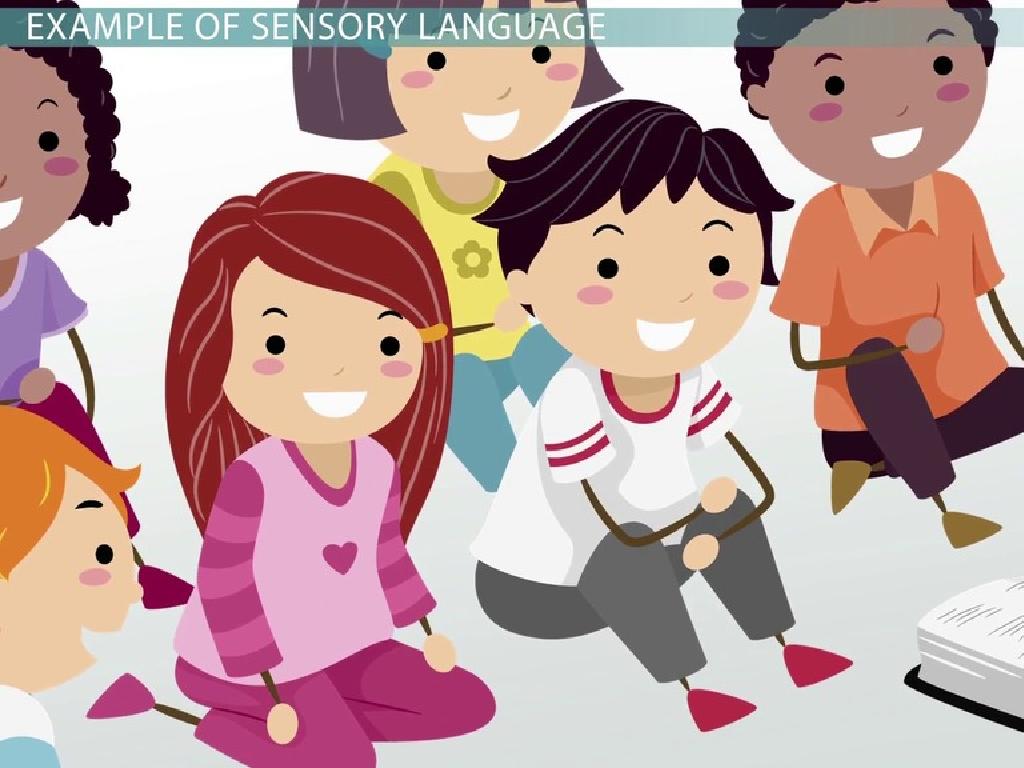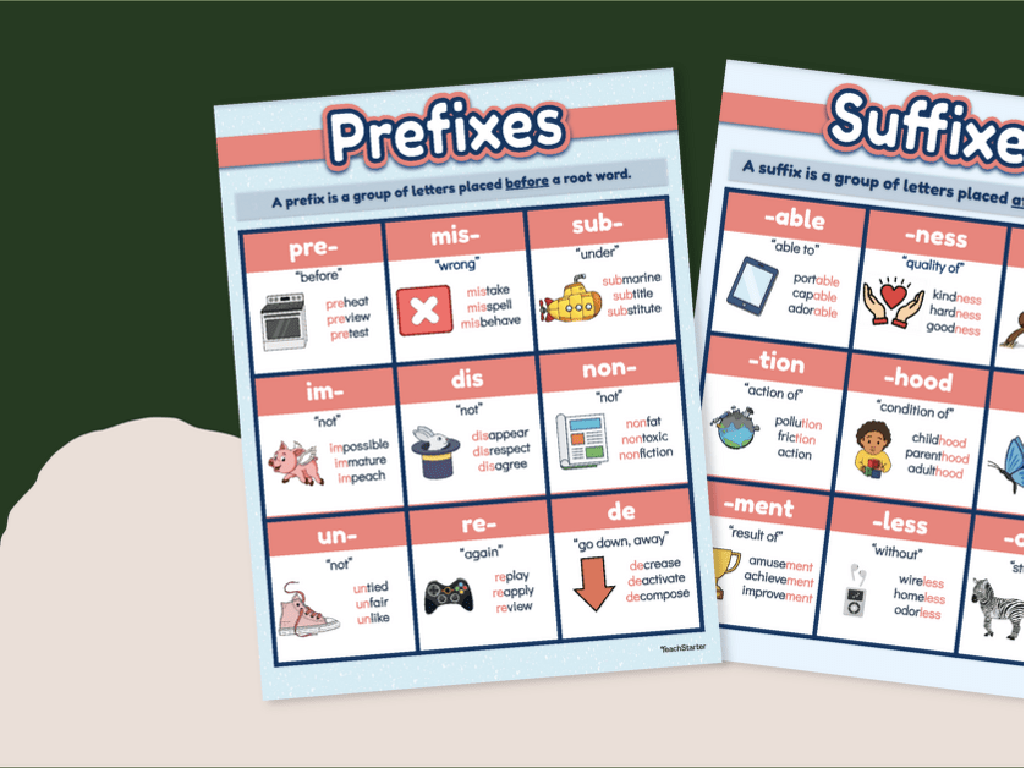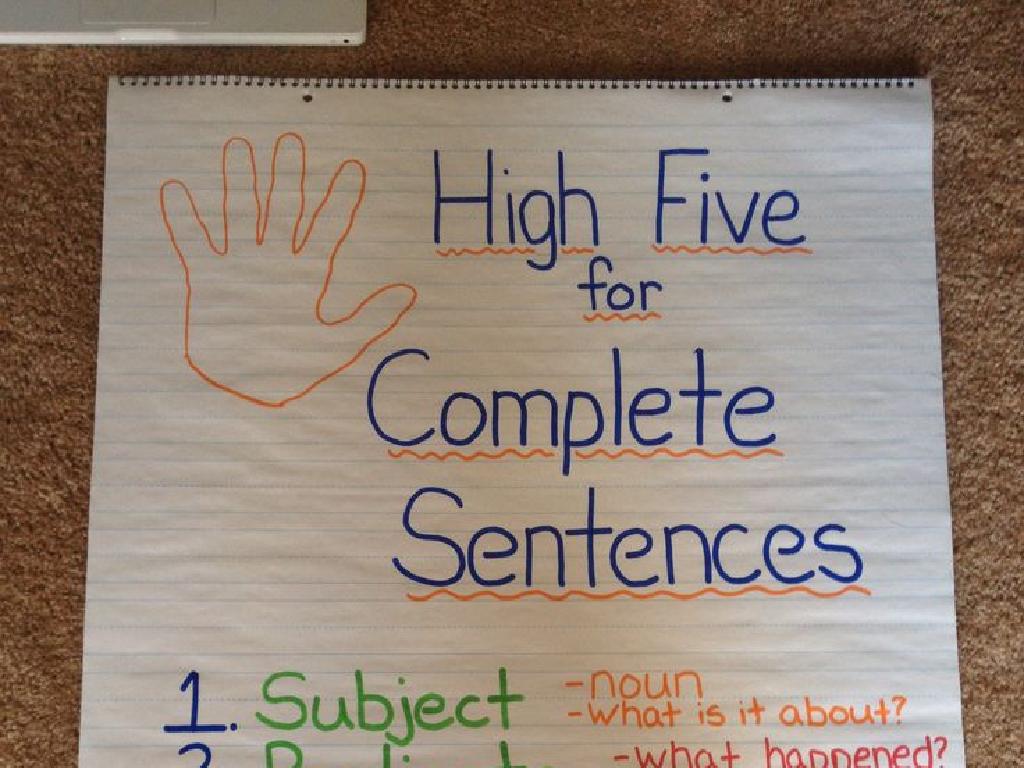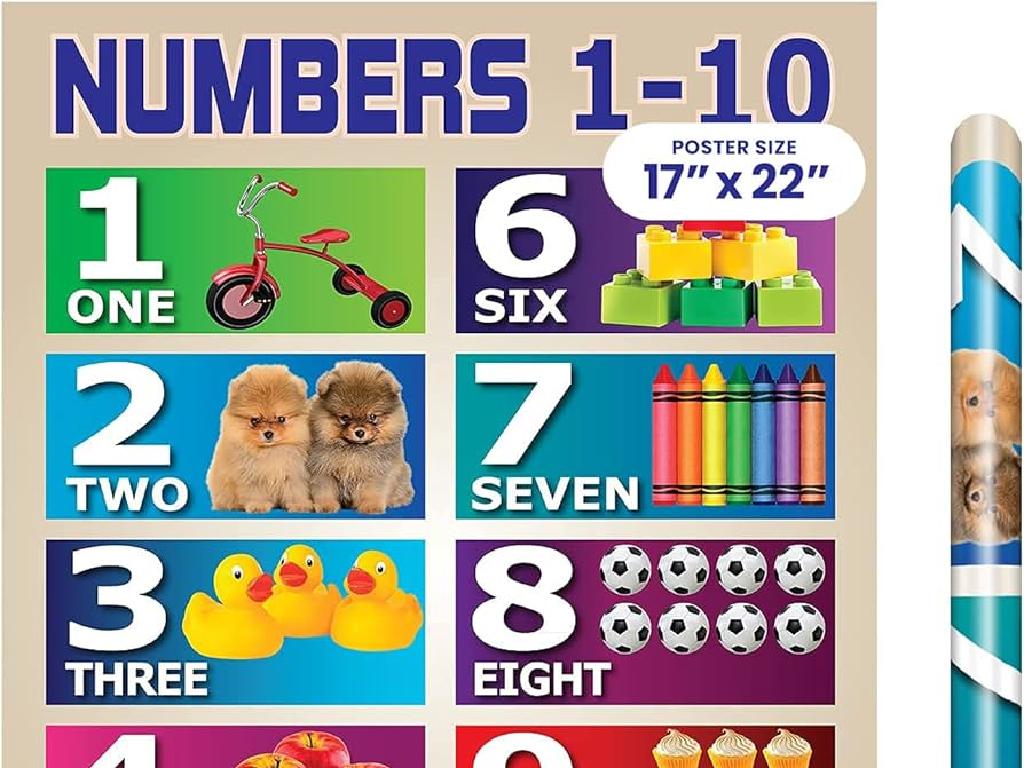Model Decimals And Fractions
Subject: Math
Grade: Fifth grade
Topic: Convert Between Decimals And Fractions
Please LOG IN to download the presentation. Access is available to registered users only.
View More Content
Introduction to Decimals and Fractions
– Decimals and fractions basics
– Both represent parts of a whole
– Decimals/fractions in daily life
– Used in money, measurements, and time
– Comparing decimals and fractions
– Decimals use points, fractions use slashes
– Converting between them
|
Begin the lesson by explaining that both decimals and fractions are ways to represent numbers that are not whole, emphasizing that they are parts of a whole. Illustrate how we use decimals and fractions in everyday life, such as in dealing with money (cents as decimals, quarters as fractions), cooking (cups and tablespoons), and time (hours and minutes). Highlight the visual differences between decimals and fractions, with decimals being written with a decimal point and fractions with a numerator and denominator separated by a slash. Conclude by explaining that despite their differences, decimals and fractions can often represent the same value and can be converted into one another, which will be explored in the following slides. This introduction sets the stage for deeper understanding and practical application of these concepts.
Understanding Decimals
– Definition of a decimal
– A decimal is a number with a point that separates the whole part from the fractional part.
– Decimal place values
– Places after the decimal: tenths, hundredths, thousandths.
– Decimals in daily life
– Money uses decimals: $1.50 means 1 dollar and 50 cents.
– Practice with real examples
– Let’s look at prices, measurements, and time to see decimals in action.
|
This slide introduces the concept of decimals to fifth-grade students. Begin by defining a decimal and explaining that it represents a whole number plus a fraction of a whole. Emphasize the importance of the decimal point and the value of digits to the right of it, with each place value being ten times smaller than the one before. Use everyday examples such as money to illustrate how decimals are used in real life, making the concept relatable and easier to grasp. Encourage students to bring in examples of decimals they find at home or in stores. Conclude by providing practice problems that involve identifying and writing decimals based on real-life objects and scenarios.
Understanding Fractions
– Definition of a fraction
– A fraction represents a part of a whole
– Numerator vs. denominator
– Top number is the numerator, bottom is the denominator
– Fractions in daily life
– Pizza slices, money, and measuring cups
– Converting fractions
|
Begin the lesson by defining a fraction as a way to represent parts of a whole, which is a fundamental concept in understanding how to model decimals and fractions. Explain the roles of the numerator and denominator, with the numerator indicating how many parts are being considered and the denominator showing the total number of equal parts in the whole. Provide relatable examples such as slices of pizza to represent fractions of a whole pizza, coins to represent fractions of a dollar, and measurements in cooking to illustrate fractions in a practical context. Lastly, touch on how these fractions can be converted to decimals, setting the stage for the next part of the lesson where students will learn to convert between decimals and fractions.
Converting Fractions to Decimals
– Divide numerator by denominator
– If you have 3/4, divide 3 by 4.
– Use long division for conversion
– Long division helps turn 3/4 into 0.75.
– Practice with simple fractions
– Try converting 1/2, 1/5, and 2/3 to decimals.
– Understand repeating decimals
– Some fractions like 1/3 become 0.333… (it repeats)
|
This slide introduces the process of converting fractions to decimals, a key concept in understanding the relationship between these two forms of numbers. Start by explaining that the numerator (top number) can be divided by the denominator (bottom number) to find the decimal equivalent. Demonstrate long division on the board with a simple example like 3/4, which equals 0.75. Provide students with easy fractions to practice converting on their own, such as 1/2, 1/5, and 2/3. Discuss how some fractions result in repeating decimals and how to recognize them. Encourage students to work through these examples and ask questions if they encounter difficulties.
Converting Decimals to Fractions
– Write decimals as fractions
– Convert 0.75 to a fraction: 0.75 = 75/100
– Simplify fractions to lowest terms
– Reduce 75/100 to its simplest form: 3/4
– Practice with examples
– Example: Convert 0.5 to 1/2 and simplify
|
This slide introduces the process of converting decimals to fractions, a key concept in understanding the relationship between these two forms of numbers. Start by explaining that every decimal can be written as a fraction with a denominator of 10, 100, 1000, etc., depending on its place value. Then, demonstrate how to simplify these fractions by dividing the numerator and the denominator by their greatest common factor. Provide simple examples, such as converting 0.5 to 1/2, and guide students through the simplification process. Encourage students to practice with additional examples and to check their work by converting the simplified fraction back to a decimal.
Modeling Decimals and Fractions with Visual Aids
– Visual models for conversion
– Use grids or pie charts to show fractions and equivalent decimals
– Relate to real-world objects
– Compare fractions to everyday items like a pizza or a chocolate bar
– Interactive example: money
– Use coins to demonstrate decimals: 1 dime = 0.10, 1 quarter = 0.25
– Practice with measurements
– Measure lengths in centimeters and convert to decimals
|
This slide aims to help students grasp the concept of converting between decimals and fractions through the use of visual aids. By relating abstract numbers to tangible objects like money and common measurements, students can better understand the value represented by decimals and fractions. Encourage students to visualize fractions as parts of a whole using grids or pie charts, and to see decimals as another way to represent those parts. Interactive activities with coins and rulers can provide hands-on experience with conversion. This approach not only makes learning more engaging but also reinforces the practical application of math in everyday life.
Class Activity: Converting with Models
– Use fraction circles for conversion
– Use decimal grids for conversion
– Work in pairs for collaboration
Pair up and help each other understand.
– Present a conversion to the class
Each pair will explain one conversion.
|
This activity is designed to provide hands-on experience with converting between decimals and fractions. Provide each pair of students with fraction circles and decimal grids to visualize the conversion process. Encourage them to discuss and collaborate to deepen their understanding. Each pair will be responsible for presenting their conversion process to the class, which will help reinforce their learning and build communication skills. Possible activities: 1) Converting 0.5 to 1/2 using fraction circles, 2) Converting 3/4 to 0.75 using decimal grids, 3) Converting 0.25 to 1/4 and comparing with fraction circles, 4) Converting 2/5 to 0.4 using decimal grids. Ensure that each pair chooses a different conversion to maintain a variety of examples during presentations.
Converting Decimals and Fractions: Practice Time
– Class practice: Solve problems together
– Individual practice: Work on your own
– Try converting 0.75 to a fraction and simplify
– Review answers: Learn from mistakes
– Why did 0.75 become 3/4? Let’s find out
– Group discussion: Share your strategies
– How did you figure it out? Any tips?
|
This slide is designed to facilitate active learning through practice and discussion. Begin with a few problems that the class solves together, demonstrating the process of converting decimals to fractions and vice versa. Then, allow students to work independently on a set of problems, which will help reinforce their understanding. After individual work, review the answers as a class to address common errors and ensure comprehension. Conclude with a group discussion where students can share their problem-solving strategies and learn from each other. This collaborative approach not only solidifies the mathematical concept but also fosters communication skills.
Homework: Practice Converting Decimals and Fractions
– Complete the assigned worksheet
– Create your own conversion problems
– Invent problems that challenge you
– Use visual aids like grids or number lines
– Drawings can make abstract concepts clearer
– Review your work for accuracy
|
This homework assignment is designed to reinforce the day’s lesson on converting between decimals and fractions. Provide a worksheet with a variety of problems for the students to solve. Encourage creativity by asking them to come up with their own conversion problems, which will help deepen their understanding. Remind them to use visual aids such as fraction grids or decimal number lines to assist in their conversions. Visual aids are especially helpful for visual learners and can make the abstract concept of decimals and fractions more concrete. Lastly, stress the importance of reviewing their work to ensure accuracy. For the next class, plan to review some of the student-created problems as examples.
Converting Decimals and Fractions: Summary
– Recap: Decimal to fraction conversion
– Place the decimal over 1 and multiply by powers of 10
– Recap: Fraction to decimal conversion
– Divide the numerator by the denominator
– Emphasize accuracy in conversions
– Next lesson: Real-world applications
– We’ll use conversions for money, measurements, and more
|
This slide aims to consolidate the students’ understanding of converting between decimals and fractions. Start by summarizing the steps for converting a decimal to a fraction, such as placing the decimal over 1 and multiplying to eliminate decimal places. Then, review how to convert a fraction to a decimal by dividing the numerator by the denominator. Stress the importance of accuracy in these conversions, as it is crucial for their application in real-world scenarios. Preview the next lesson by giving examples of how these conversions are used in everyday life, such as in dealing with money or measurements, to pique students’ interest.





